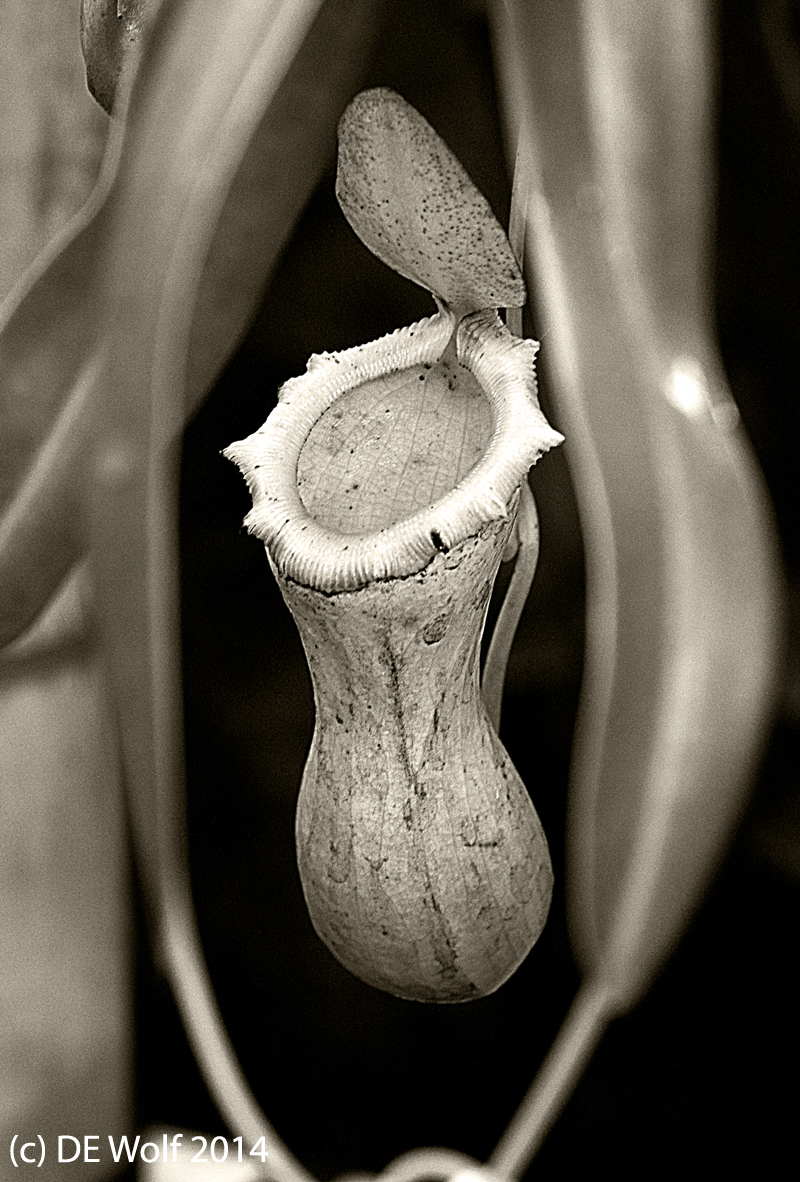The gloomy weather here continues: cold, rainy, and windy. We have even had our first snow, albeit of the nonsticking variety. So I continue to “work up” photographs. So today I am offering up an image of a pitcher plant again taken at the Olbrich Botanical Gardens in Madison, WI, and again under really poor light. But it was ever so vivid that I remember the moment including the damp warm smell of the Earth and the sound of running water. These are always intriguing plants, and here I was attracted by the lovely, yet savage, shape captured between two blade like and out-of-focus leaves,
Pitcher plants are an adaptation of four families of carnivorous plants. Insects, such as flies, are attracted to the cavity formed by the pitcher shaped leaf. Often this involves an alluring smell or visual appearance. The insect becomes trapped inside and ultimately drowns in the pitcher’s nectar. The body of the insect is gradually dissolved. The mechanism of this digestion can be quite complex. It can involve symbiotic bacteria or lytic enzymes. But also it can involve digestion by insect larvae within the liquid, in which case the insect excretes nutrients into the fluid. All these mechanisms create a nutritive brew of amino acid and other metabolites for the plant to feast upon. It is a tribute to Darwinian evolution.
They are splendidly complex objects for photography. And I have photographed them before. The depth of possibilities is brilliantly explored by photographer Beth Moon in her “Savage Garden” series.
Canon T2i with EF70-200mm f/4L USM lens at 98 mm, ISO 1600, Aperture-Priority AE mode, 1/100th sec at f/6.3, with no exposure compensation.

